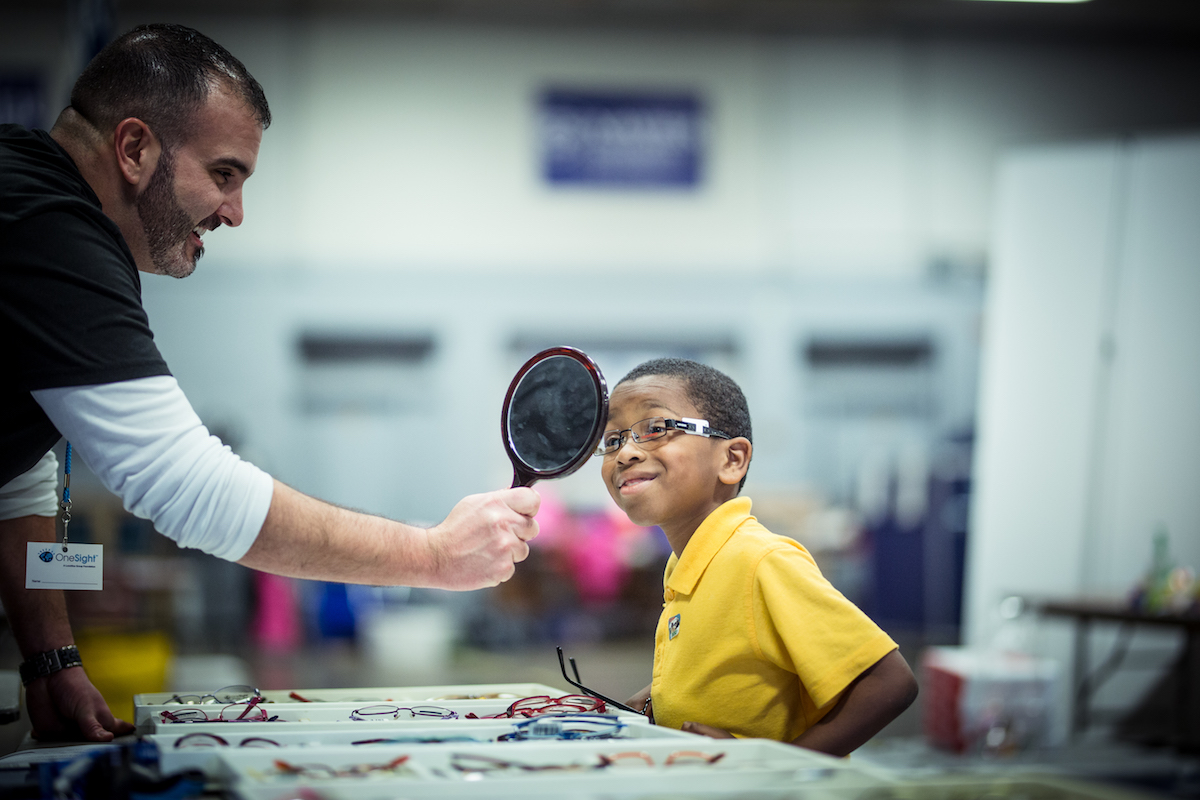
It’s as if the U.S. Vision Care gap has been caught in our nation’s peripheral vision, itching for the chance to make its existence known. As other fleeting news makes headlines, the vision care gap remains relatively unearthed to the general public. And yet, a whopping 25% of US students have an undiagnosed vision problem.
Whether their lack of access is rooted in affordability, awareness or physical access, this issue is unacceptable. If 25% of our nation’s students can’t reach their full potential simply because they cannot see clearly, then what does that mean for our country’s future?
At OneSight, we’re working to change the vision care landscape in the U.S. by bringing access to those that don’t have it and educating others on the gap that’s keeping so many Americans from reaching their full potential. We’re far from done – but we’re committed to continuing to find solutions to empower more U.S. students and underserved communities with clear sight. The vision care gap can be divided into three problem areas:
LACK OF AWARENESS
Many children are living without vision care access in our country because they’re not aware that they even have a problem – their world has always been seen through a blurred lens, and they have nothing to compare it to. Take Adan for example. He was struggling in the classroom and was constantly in the principal’s office, which led his mother to believe that he might have ADHD. It wasn’t until he received an eye exam and a pair of glasses at a OneSight clinic that she realized he had vision problems. His mom says, “He never told me he couldn’t see the board, he always said the issue was that he was bored in class.”
LACK OF AFFORDABILITY
In the US, vision care and health care are often treated separately. So even if medical care for students is available, it often doesn’t include a comprehensive eye exam (or sometimes any vision care at all). And then there are replacements—kids can be tough on glasses, so even if they do get a pair, they may not be able to afford a new pair if their prescription changes, their glasses break, or they physically outgrow them.
Affordability can be one of the main barriers to accessing vision care for many people in the U.S. When finances are tight, a pair of glasses get deprioritized in comparison to other pressing needs like food, shelter and medical bills. Parents like Sean and Emily’s mom are fighting to make ends meet, and an eye exam and a pair of glasses are a luxury that many can’t afford. At OneSight, we believe it shouldn’t be a luxury – that everyone, everywhere should have access to quality vision care.
LACK OF PHYSICAL ACCESS
Believe it or not, a lack of proximity keeps thousands of Americans from accessing vision care. In rural communities where optometrists and/or affordable eyecare aren’t as common, people must travel to great lengths for an eye exam. OneSight’s working to change that. Our school-based vision centers go straight to the source, placing vision care facilities within schools in at-need communities. Students are able to visit the centers during school hours and sometimes their family members are able to use the centers as well. The centers set the cost of glasses and care at an affordable rate that those in the community can afford with insurance. If the student is uninsured, OneSight will provide them with the glasses and eye exam for free.
Some communities, such as Bakersfield, CA, require tailored solutions. To serve this region OneSight enacts a ‘hub and spoke model’, in which we use a main vision care facility to manufacture glasses and host community vision screenings. In the surrounding rural areas, we create smaller centers in schools that can conduct screenings and send prescriptions off to be manufactured at the main facility.
Needless to say, there are many reasons why this problem exists in the U.S., all of which boil down to one simple solution: access to an eye exam and a pair of glasses. We have a plan to bring access to everyone, everywhere – the U.S. included – but we can’t do it alone. We need the help of volunteers, partners, sponsors and you. Learn more about how we can close the vision care gap for good, together.